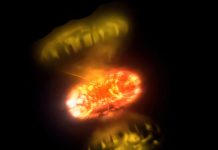
Measuring things accurately is a cornerstone of science, and thanks to quantum sensing, scientists can now measure incredibly tiny phenomena—like the vibrations of atoms or the properties of individual photons—that were once unimaginable.
One powerful tool in quantum sensing is a technique called “spin squeezing,” which can greatly improve the precision of these measurements.
However, achieving spin squeezing has been notoriously difficult. Now, physicists at Harvard have found a way to make it easier.
Spin squeezing is a form of quantum entanglement, where the behavior of a group of particles becomes closely linked.
This allows for more precise measurements of certain signals but makes it harder to measure other related signals accurately. Imagine a balloon being squeezed—it becomes taller but narrower.
Similarly, spin squeezing changes how particles fluctuate, improving the precision of some measurements at the cost of others.
“Quantum mechanics can help us measure incredibly small signals,” said Norman Yao, a Harvard physics professor and one of the authors of a new study published in Nature Physics.
“We have demonstrated that it’s possible to achieve this quantum-enhanced precision in a much wider range of systems than previously believed.”
The concept of spin squeezing was first proposed in a landmark 1993 paper, which described how it could be achieved through “all-to-all” interactions between atoms.
This type of interaction is like a large Zoom meeting, where everyone can communicate with everyone else at the same time. In such a setting, it’s easier to create the quantum correlations needed for spin squeezing.
However, in nature, atoms usually interact more like a game of telephone, where they only communicate with their closest neighbors.
For years, scientists thought that only the all-to-all interaction model could truly achieve spin squeezing. But the Harvard team’s new research shows that it can be done much more easily.
The researchers discovered that the necessary conditions for spin squeezing can be found in a common type of magnetism called ferromagnetism—the same force that makes refrigerator magnets stick.
They realized that instead of needing every atom to interact with every other atom, it’s enough for the particles to be connected well enough to align into a magnetic state. This alignment can naturally lead to spin squeezing.
By lowering the barrier to achieving spin squeezing, the researchers hope their work will open up new possibilities for creating more practical quantum sensors. These sensors could be used in a variety of applications, such as biomedical imaging and atomic clocks.
In fact, Yao is now leading experiments to generate spin squeezing in quantum sensors made from nitrogen-vacancy centers, which are tiny defects in diamonds that are known to be excellent quantum sensors.
This advancement could lead to more portable and efficient sensors, making quantum technology more accessible for real-world applications.



